
In the fall college football fans fret over team rankings. Multiple ranking systems publish their take on who’s number one with disagreements abounding depending on team loyalty. But with bonsai tree branches it’s a lot simpler. What’s called the number one branch is the first branch from the bottom. The number one branch is probably the oldest branch on the tree, unless the tree suffered some sort of calamity. As the oldest branch on the tree it should be the thickest branch. And since it is the first branch on the tree, it usually sets in motion the rest of the design notions of the tree.
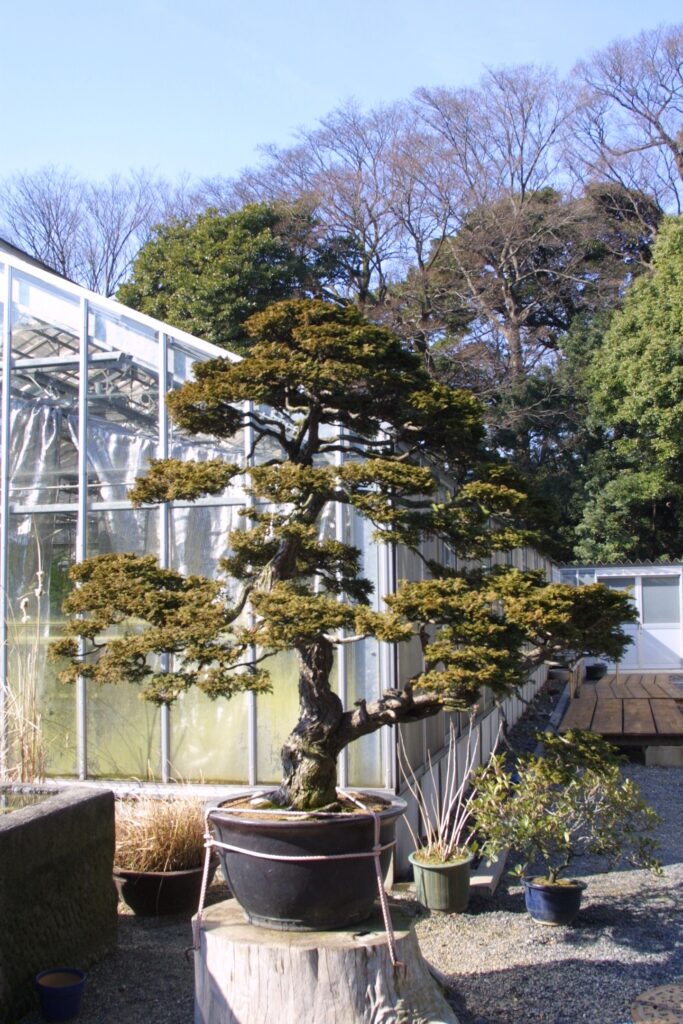
Let’s examine the role of the number one branch and how it fits in a tree’s design. I already mentioned the number one branch is the first branch up from the ground on the tree. In a prototypical bonsai design with multiple branches, you have either a branch on the right, then on the back and then on the left. (Or a branch on the left, the right then the back.) Typically the first branch will be facing towards the front. Some people say the first branch should be greeting you with a hug. In that particular case then the first branch will help decide the front of the tree. Therefore, the first branch is on the side of the tree and maybe rotated a bit towards the front.
Once you fix that first branch in the design then you also consider the overall height of the tree. On a theoretical prototypical bonsai tree the first branch would be about a third of the way up height of the trunk.
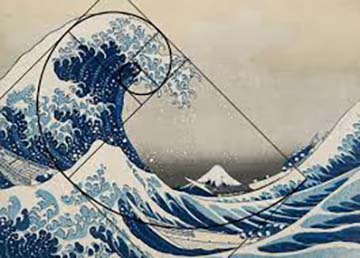
The distance to the second branch would be less than the distance that the ground is to the first branch. A nice number to use to determine how much less would be 0.6. The 0.6 comes from the Golden Mean. If you apply the Golden Mean to the branch placement up the tree, the design will have a pleasing effect. That’s how the Golden Mean works. It has to do with human’s perception of reality. Items spaced at the Golden Mean have a more pleasant appearance.
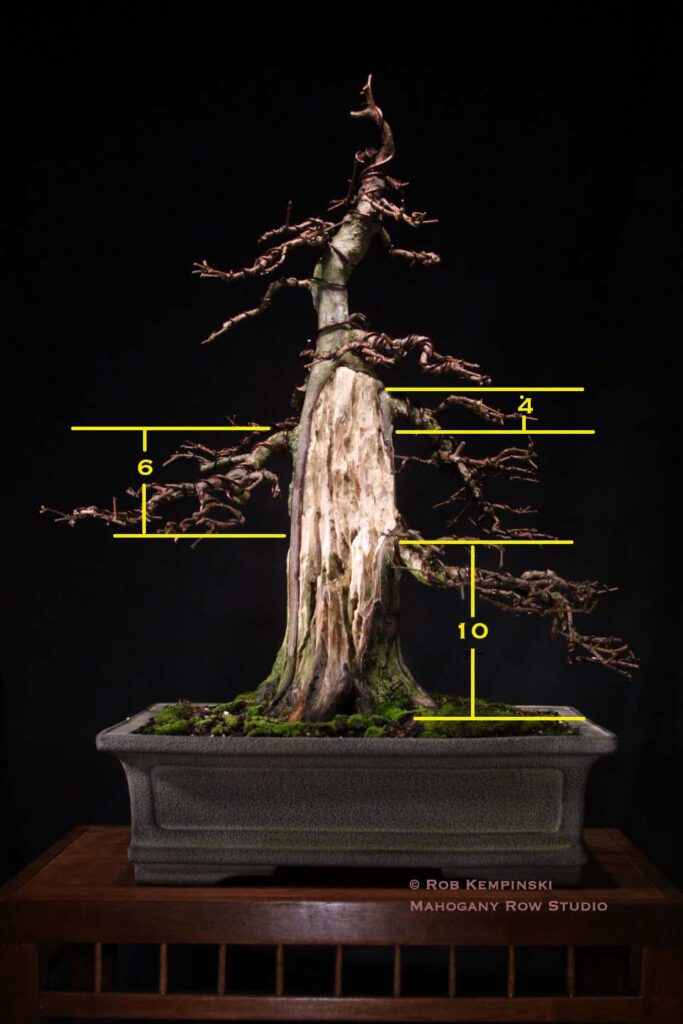
Notice, I said theoretical prototypical design. It is rare when designing a bonsai tree that you can create branches in a prototypical design. That is where the artistry comes in. One uses these rules and then works from them, but knowing the rules helps understand the design rationale.
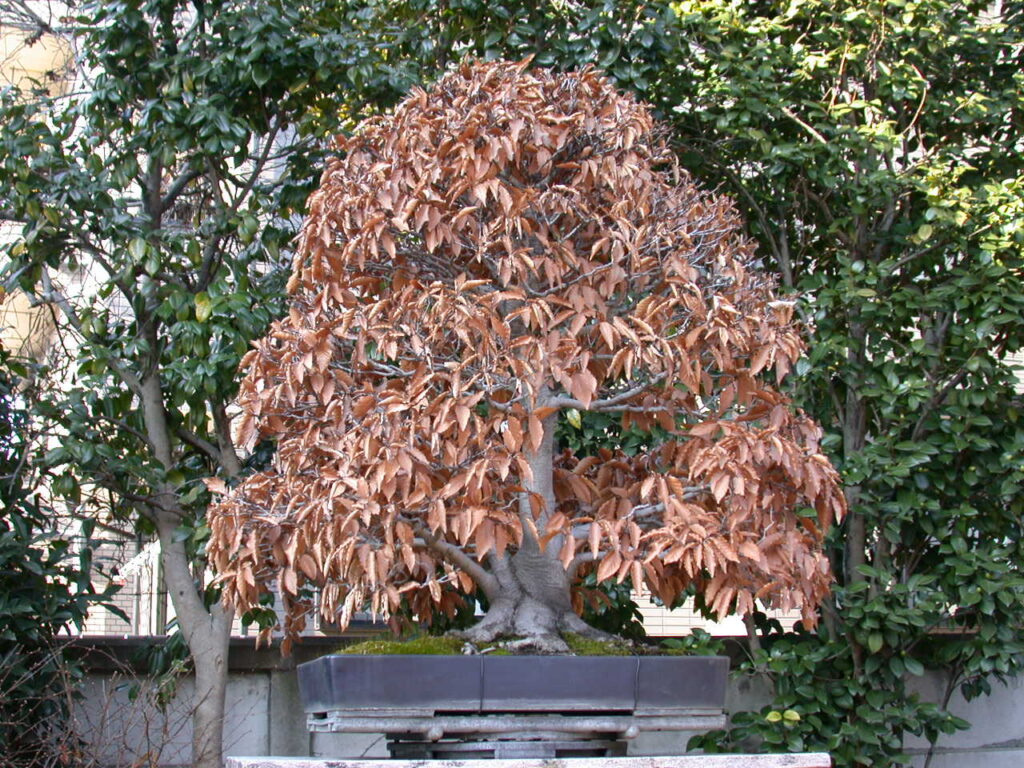
The number one branch usually needs to be the thickest branch. Nursery stock isn’t always this way, particularly on juvenile material. If your number one branch is not the thickest branch, you have a couple of choices. First you can either remove the thicker branches above it or you could carve them to reduce their thickness. Second, you can shorten the above branches and let the number one branch grow unchecked. By that I mean leave the branch alone and don’t prune it for a couple of seasons. For example, on a 2 feet tall tree the number one branch could grow out to 10 or 15 feet long so that it fattens up at its base. Remember, it takes patience as there’s no such thing as an instant bonsai.
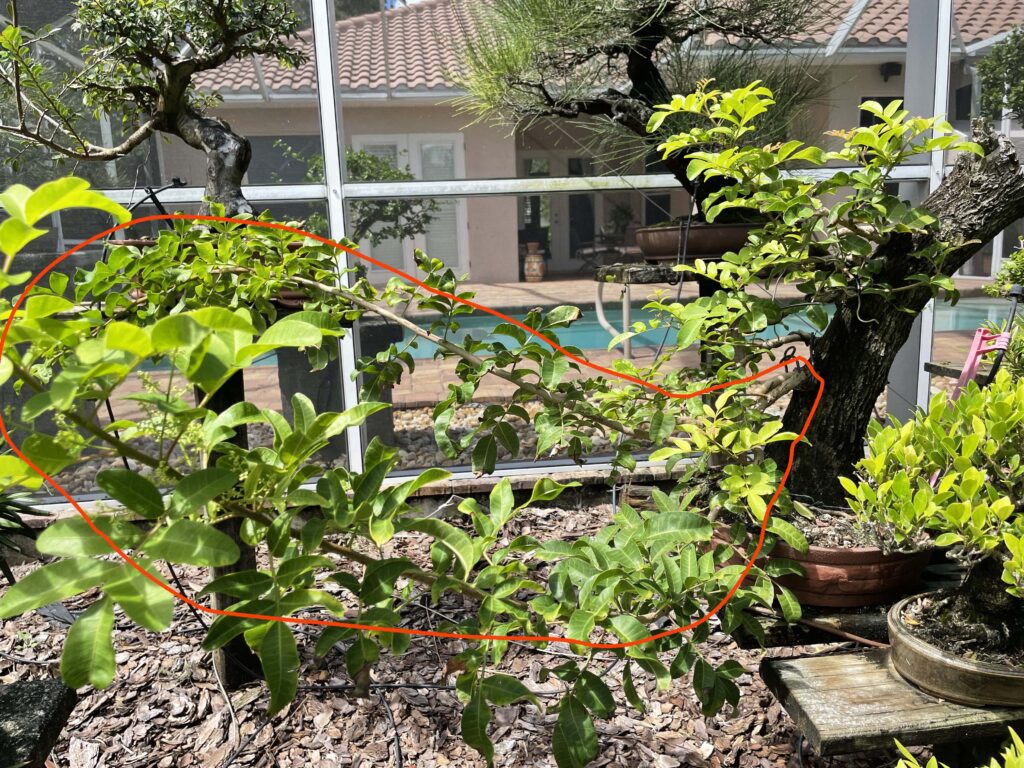
Once the number one branch has thickened and is pointing in the direction needed for the design it’s time to develop ramification. Ramification is the fine network of branches that makes a tree look like a full-size tree. I covered ramification in the April 2024 Kempinski Korner article.
What happens if the number one branch is not pointing to the front? Well it’s not the end of the world. Rules are made to be broken. I’m gonna estimate that at least 1/3 of the trees of my collection have a number one branch that actually comes from the back of the tree. Sometimes this is what the design requires.
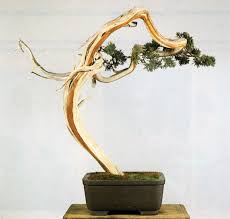
The movement of the number one branch can also set the tone and rhythm for the rest of the tree’s design. By rhythm I mean repetition of form. If the number one branch hangs down and is very twisty then it would make sense that the rest of the tree’s branches hang down a bit and are twisty. If the number one branch is fairly straight and comes out straight, then your design may want to call for the rest of the branches to come out straight and stay fairly straight . To design a discordant branch shape means the overall design would be incongruous. That’s ok if the design goal was to create harshness. Not every tree has to have harmony or be pleasing to view.
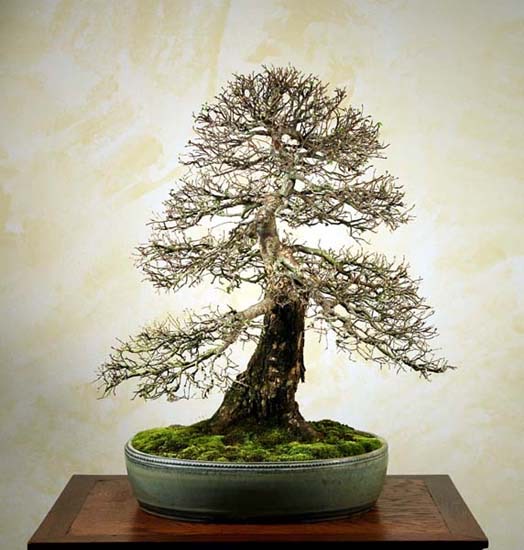
When designing a bonsai tree or even when you’re selecting material, evaluate where that number one branch should be. If it’s where you like it to be, great. If it’s not then grow it out or select a different branch. But at least be cognizant of the impact on the overall design. And be grateful you don’t have to worry about a newspaper poll to decide.
